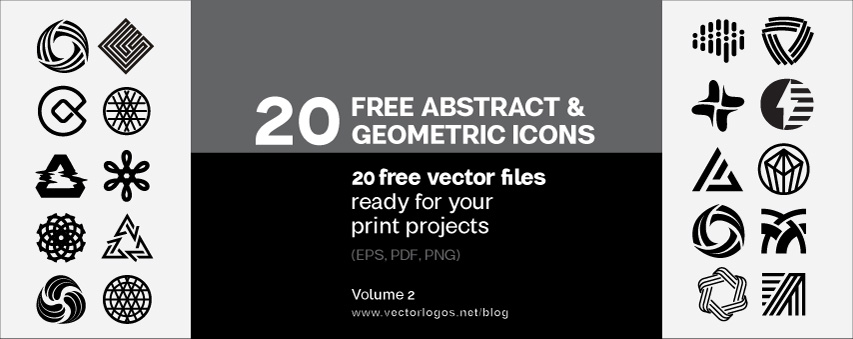Archive
Sep11
Thoughtful, Budget-Friendly Appreciation Gifts for Small Teams and Loyal Customers
Comments Off on Thoughtful, Budget-Friendly Appreciation Gifts for Small Teams and Loyal Customers

You’ve hit a milestone. Maybe you landed a big client, hit a significant anniversary, or wrapped up a successful season. Recognition matters, but your gift budget is real. The good news? You don’t need expensive swag to make a lasting impact.
This guide shows how small businesses can give appreciation gifts that feel personal, high-quality, and cost-conscious, with formats that fit both in-person and remote relationships.
Why Intent Matters More Than Price
Customers and employees remember how you made them feel. Thoughtful tokens, even under $10, carry emotional weight when they’re tailored, story-driven, or tied to real moments.
Generic swag (pens, mugs) often ends up in drawers. But a photo book, handwritten note, or well-designed digital message? That earns a spot on a shelf, desk, or social post.
For example, a report by Sendoso shows that timely, personalized gifting leads to higher customer retention and brand engagement, particularly during key transitions like anniversaries or seasonal milestones.
Photo Books as Meaningful Keepsakes
One standout option: custom photo books that capture shared success. A well-designed book can highlight employee achievements, customer milestones, or community events — creating a tangible reminder of progress made together.
Use a wholesale photo books provider to order in bulk and save. Look for services that offer free digital backups, vivid color printing, and premium paper quality to ensure your gift feels high-end without costing much.
Ideal for:
- New employee welcome kits
- End-of-year appreciation campaigns
- “Client journey” retrospectives
Make Branded Gifts Feel Intentional
Branded items still work, especially when they look and feel like gifts, not ads. A modern logo printed on a quality journal or desk item communicates pride and professionalism.
Before sending anything, ask: Would I keep this on my desk? If the answer is no, rethink it. A polished brand elevates even low-cost items.
If your logo feels dated or inconsistent, consider refreshing it using high-quality design options like Vector Logos. Clean branding increases the perceived value of whatever you attach it to, from tote bags to thank-you cards.
Low-Cost Gift Ideas That Still Make an Impression
- Mini desk plants – Affordable, long-lasting, and universally liked
- Short video thank-yous – Use a free tool like Loom to record a personal message
- Custom notebooks – Branded journals with subtle, aesthetic designs
- Snack bundles – Nationally trusted vendors like Harry & David and Hickory Farms offer gourmet snack boxes with meats, cheeses, sweets, and seasonal assortments — perfect for budget-conscious appreciation with wide shipping coverage.
- Gift cards to neighborhood spots – Supports local businesses and gives recipients a treatNeed inspiration? Sites like Etsy offer customizable designs at a low cost.
Quick Comparison Table: Which Gift Fits Best?
| Gift Type | Use Case | Cost Range | Personal Touch |
| Photo Book | Milestones, Retrospectives | $6–$10 | High |
| Branded Notebook | Onboarding, Events | $3–$7 | Medium |
| Video Thank-You | VIP Client Moments | Free | High |
FAQ: Small Business Gifting
Q: What’s the best way to personalize a low-cost gift?
A: Add storytelling. Whether it’s a photo from a shared event or a handwritten note, personal context makes simple items memorable.
Q: Should I always include my logo?
A: Only when it feels like part of the design, not an ad. Prioritize useful, beautiful items that people want to keep.
Q: How do I scale gifting across a distributed team?
A: Use digital-friendly options, like email gift cards, short videos, or bulk-mailed printed items. Tools like Postable to streamline the logistics.
Takeaway
Great appreciation gifts don’t have to be expensive, they just have to feel intentional. Whether it’s a snack bundle from a trusted national brand, a personalized photo book, or a simple video thank-you, the most impactful gestures remind people they’re valued.
Before you choose your next gift, ask:
Will this make them feel remembered, not marketed to?
Make that your compass, and you’ll always gift well.
Text credit: Elena Stewart
Photo credit: Pexels
Aug29
What Comes After the Slow Days: A Business Owner’s Guide to Bending Without Breaking
Comments Off on What Comes After the Slow Days: A Business Owner’s Guide to Bending Without Breaking

Economic change rarely announces itself politely. It moves like a tide—gradually, then all at once—dragging storefronts and main streets along with it. But local businesses aren’t powerless in these moments. They’re not just survivors in the storm; they’re often the very scaffolding that holds a community upright. Adapting isn’t about flipping a switch. It’s about sensing the pressure early, building strong local alliances, and embedding flexibility into every decision. This piece walks through what adaptation really looks like—from signals worth watching to the kind of collaborative action that turns panic into presence.
Start by Knowing What’s Fragile (and What’s Not)
Every local business has soft spots—whether it’s a dependency on foot traffic, a seasonal cash flow rhythm, or an aging supplier network. That’s why before adjusting, you need to measure. Not broadly. Not vaguely. But precisely. Some city planners and community development groups have begun building what they call baseline resilience indicators—a set of measures that track local business ecosystem health during downturns. These include owner optimism, available emergency capital, and local procurement flows. Small business owners who track their own version of these indicators—not just revenue and sales—are better equipped to shift tactics fast. In many cases, the first signal isn’t a dip in sales. It’s the silence in foot traffic patterns or rising supplier delays. Recognizing these early gives you lead time, which is everything.
Formal Learning as a Flexibility Tool
Economic adaptation isn’t only tactical. It’s cognitive. The better you are at strategy, forecasting, and communication—the more leeway you have when things shift. That’s why some business owners use slow seasons to study. But not just any learning—programs built for adult learners, with business challenges baked in. Options like online business degree accreditation allow owners to build financial fluency, explore digital marketing, and run case studies that mirror their real-life pivots. The flexibility of asynchronous formats means they’re not choosing between class and clients. And long-term, the ability to break down P&Ls, negotiate contracts, and model customer lifetime value pays dividends in every new decision made.
Read What the Economy Is Whispering—Not Just Yelling
You don’t need to be an economist to sense movement. The challenge is parsing signal from noise. Forget big macro headlines for a second. What matters is whether people are holding off on repairs, skipping coffee runs, or cutting weekend travel. It’s those micro-decisions that shape local momentum. A few entrepreneurs track signals from consumer spending and employment shifts to decide when to pull back inventory or extend hours. In other words, they treat the town like a conversation. You listen to what people are buying. What they’re not. And how their routines bend. This kind of quiet observation often reveals more than financial projections ever could.
Link Arms Before the Waves Hit
Resilience doesn’t just live inside a balance sheet—it lives in neighborly trust. One of the clearest success stories in recent years came out of Morton, Illinois, where a set of small business owners ran coordinated Main Street initiatives that synced sales events, aligned store hours, and even pooled marketing dollars. None of them had to “go it alone.” Their results? Not only higher weekend foot traffic, but local press attention, and new customer spillover. This is community strategy, not just community support. And it requires zero grant money. Just shared goals, calendars, and a willingness to talk about what’s working. When small businesses function as a network, not competitors, they generate buffers no single store could build on its own.
Match Agility With Capital You Can Move
Too many businesses get stuck not because their idea is flawed—but because their funding model is brittle. Adaptation requires room to move. And traditional small business loans aren’t always built for that. That’s where crowdfunding and flexible financing options come in. Platforms like Honeycomb Credit or local community development lenders can fund specific pivots—a walk-up window, a bike delivery fleet, a new product line—without requiring full-scale reapplication every time the winds shift. One café owner in Oakland used this model to build an outdoor patio within two weeks of indoor restrictions tightening again. She didn’t “ride it out”—she moved the whole business model outside. Fast funding, paired with a flexible operating mindset, isn’t just convenient. It’s essential.
Strength Comes From Supply Chain Elasticity
When shelves go empty, it’s not usually a logistics problem. It’s a dependency problem. Many local businesses now see resilience not just as preparation—but as diverse suppliers and local agriculture partnerships. In one coastal town, a market that previously relied on a single distributor began sourcing from four nearby farms, offering food box subscriptions when imports slowed. This isn’t a cute “shop local” story—it’s about survival logic. It’s easier to re-negotiate terms with a neighbor than a nameless wholesaler. And when delays hit, you’re not left flat-footed. Instead of waiting for a solution, you’re already pulling from your own backup plan. The added bonus? Customers trust businesses that move visibly and quickly during shocks. They return more often. They remember.
Recovery Isn’t Linear—But It Is Visible
Every town has its own story of recovery. And sometimes, the most powerful thing a business can do is show up when it’s hardest. In Altadena, CA, a swath of restaurants reopened in May after being shuttered by wildfires. Their return wasn’t just about food—it was about rhythm. Locals didn’t just crave tacos or smoothies. They craved what those places meant: community. The restaurant reopenings after the Eaton Fire weren’t driven by branding agencies or national PR. They were driven by owners repainting walls, neighbors volunteering, and menus scrawled with Sharpie. This kind of grounded return does something subtle—it recalibrates trust. When locals see you rebuild, they believe in the possibility of their own renewal, too.
Local businesses are more than storefronts. They’re sensors. Anchors. Messengers. When the economy stirs, they’re often the first to feel it and the last to get relief. But adaptation isn’t about scrambling for survival—it’s about building small, smart, human systems that shift with the pressure. That means tracking your own fragility, watching your neighbors’ moves, and investing in learning that doesn’t just improve your margins—it expands your horizon. What makes a business resilient isn’t just its grit. It’s its grip on the people, tools, and patterns that make recalibration possible. Especially when everything else gets noisy.
Discover the perfect logo for your brand at Vector Logos, where creativity meets quality with a wide range of ready-made vector designs tailored for every industry.
Text credit: Elena Stewart
Photo credit: Pexels
Aug16
How Performance Monitoring Turns Your Website Into a Smarter Business Tool
Comments Off on How Performance Monitoring Turns Your Website Into a Smarter Business Tool

It’s easy to think of website performance as just a technical metric—something for the IT team to monitor or a checkbox during site audits. But under the hood, performance metrics carry weight far beyond load speed. They shape perception. They influence trust. They affect revenue. From user experience to SEO, conversions to customer loyalty, every part of your digital presence is either amplified or undermined by how well your site performs. And without active monitoring, you’re flying blind through all of it.
Speed Sets the Tone for Brand Perception
When your website lags, your brand lags with it. That tiny delay before a page loads, that unexpected hiccup during a checkout—those are more than technical flaws. They’re silent signals to your visitors: something isn’t working here. Website performance monitoring doesn’t just keep things fast. It keeps your entire business clear, responsive, and tuned in to how users actually experience what you offer. Studies show that users expect pages to load faster than three seconds, and anything beyond that feels like friction, especially on mobile. They tap. They wait. They leave.
Know What to Track—And Why It Matters
You don’t need to be a developer to understand which metrics matter. Tools like Google Analytics surface key signals: load time, bounce rate, traffic source, and device type. Performance metrics you should monitor help you track not just speed, but patterns: where users drop off, which devices fail most, and what changes actually move the needle. The point isn’t to obsess over numbers. It’s to align your digital environment with what your customers need, minute to minute.
Conversions Slip Through Slow Cracks
It’s not just about who visits. It’s about who stays—and acts. If your landing page takes an extra second to load, you might not notice it on the backend. But your visitors do. That delay can mean the difference between a lead and a loss. Conversion rates drop noticeably with just a one-second delay, even if everything else about the offer remains unchanged. People don’t just crave fast—they trust it. And trust is the bridge to revenue.
SEO Is Tied Directly to Load Time
Google doesn’t just care what your site says—it cares how it performs. Google treats speed as a key ranking signal, and it weighs into where you land on the results page. A sluggish site, no matter how informative or visually slick, sends the wrong cues. Crawlers notice. Bounce rates climb. Rankings fall. Performance monitoring helps you spot what the algorithms will flag—before they do.
Core Web Vitals Drive Deeper Engagement
It’s not enough to be fast. You have to be consistent. That’s where Core Web Vitals come in—metrics like Largest Contentful Paint (LCP), Cumulative Layout Shift (CLS), and First Input Delay (FID) that measure real-world usability. Sites that pass these tests tend to hold attention longer, generate more clicks, and reduce friction in key flows. Core web vitals like LCP and CLS shape engagement in a way that connects directly to revenue and retention. Monitoring lets you see these signals in motion—not just after the fact.
Customer Trust Is Built on Seamless Experience
People remember how a site made them feel. Delays, crashes, and slow transitions erode confidence—even if your product is great. There’s a direct, research-backed correlation between website quality and satisfaction that drives customer loyalty. When a site feels fast and frictionless, users equate that smoothness with professionalism and reliability. Monitoring helps maintain that standard. And in a competitive market, trust is your most defensible edge.
Performance Monitoring Creates Agility
Downtime isn’t always dramatic—it can be a button not firing or a lagging image that makes checkout feel clunky. Those micro-failures pile up. Performance monitoring detects hiccups before they dent revenue, allowing you to act fast and reduce churn. Agility here doesn’t mean speed alone—it means insight. With the right tools, you see problems before customers do, keeping every department—from marketing to ops—in sync with what’s really happening on the digital front lines.
Performance monitoring isn’t about ticking a box—it’s about owning the experience you’re delivering. The businesses that do it well don’t just avoid mistakes. They stay ahead of them. They turn performance into a strategic advantage, not just a tech fix. Every insight pulled from your site’s behavior is a signal you can act on—before it costs you. And in a marketplace driven by impressions and interactions, that edge matters. Your website isn’t static. Neither is your audience. Stay sharp. Stay responsive. Make performance part of the conversation.
Discover the perfect logo for your brand at Vector Logos and save up to 50% on high-quality, ready-made vector designs that will elevate your business identity.
Text credit: Elena Stewart
Photo credit: Pexels
Jun25
Website Enhancements That Quietly Supercharge Profitability
Comments Off on Website Enhancements That Quietly Supercharge Profitability

A website isn’t just your digital storefront anymore – it’s your handshake, your elevator pitch, your sales team, and your customer service all wrapped into one sleek package. But many business owners let theirs collect dust, stuck in a “good enough” phase while they focus energy elsewhere. The truth is, even small tweaks to your site can quietly drive up your bottom line without needing a total overhaul. Think of these enhancements less like bells and whistles and more like pressure points that, when pushed just right, release more value than you’d expect.
Simplify Your Navigation, Even If You Think It’s Already Simple
It’s wild how fast a visitor will bounce if they can’t find what they need within a few seconds. A clear and intuitive navigation bar isn’t just about aesthetics; it’s about guiding someone from curiosity to checkout without confusion. You’ve probably looked at your menu so many times that everything seems obvious, but new visitors don’t come with your context. Test your site with fresh eyes—literally ask someone who’s never used it before to find something, and watch where they hesitate.
Focus On Micro-Commitments
You don’t propose marriage on the first date, so stop asking users to give up their email or credit card the second they land. Instead, give them something small to say yes to first—a quiz, a product filter, a short tutorial, even a fun poll. These tiny interactive moments make people feel involved without feeling pressured, and that mental “yes” primes them for bigger actions later. Every small action builds trust, and trust builds revenue over time.
Speed Up Your Site
No one’s waiting around for your hero image to load, no matter how beautiful it is. Slow load times kill conversions, especially on mobile where attention spans get even shorter. Compress your images, kill autoplay videos, and get rid of anything bloated that’s dragging your performance down. A faster website doesn’t just feel nicer—it makes people stick around longer, click more, and buy with less friction.
Level Up Your Web Skills with Online Degree
If you’ve ever felt boxed in by the limits of your tech knowledge, going back to school could be your way out—and a powerful step forward. Learning how to manage and scale your own website doesn’t mean becoming a full-stack developer overnight, but sharpening your web and IT skills will give you more control and confidence in your digital strategy. Earning an IT degree will give you more skills to handle technical decisions without outsourcing every minor issue. Pursuing certifications in higher education allows you to grow your expertise while still focusing on running your business.
Use Language That Actually Sounds Like You Talk
Too many websites read like they were written by someone trying to impress their high school English teacher. Stiff, over-polished copy won’t connect—it’ll just sound like you’re trying too hard or hiding something. Ditch the jargon and speak directly to the person on the other side of the screen. Your words should sound like a human wrote them on purpose for another human, not like a robot regurgitated marketing clichés.
Strategically Showcase Social Proof Without Making It Look Desperate
You don’t need to wallpaper your site in five-star reviews to earn trust—just place them where hesitation naturally creeps in. Right before someone clicks “buy,” show them a quote from someone who was on the fence but went for it and loved it. Before you ask for an email, slide in a testimonial from someone whose inbox isn’t flooded with spam because of you. It’s about being timely, not loud. Proof works better when it feels discovered, not forced.
Make Your Search Bar Smarter
If your site has more than a handful of products or pages, a basic search bar isn’t going to cut it. You need predictive search that actually understands what people mean, not just what they type. Let the bar suggest popular products, autofill terms, and gently catch typos without making people feel dumb. A good search experience keeps users engaged and subtly shows you actually understand what they want.
Create Landing Pages That Speak to One Person, Not Everyone
Generic pages convert like generic emails—they don’t. Instead of dumping everyone onto a homepage and hoping they find their way, build targeted landing pages for specific offers, audiences, or campaigns. Whether it’s someone who clicked an ad, joined a list, or abandoned a cart, give them a page that feels made just for them. One-size-fits-all rarely fits anyone well, especially online.
Let Customers Leave Easily
This sounds counterintuitive, but making cancellations, returns, and opt-outs easy builds long-term loyalty. People talk when they feel burned, and angry customers cost you more than you think in lost referrals. When someone sees they can walk away without a fight, they’re more likely to come back later—or never leave at all. Treat your policies as part of your brand, not just fine print in a footer.
Not every website upgrade has to be a complete redesign or a tech-heavy rebuild. Sometimes the changes that matter most are the ones your visitors don’t even consciously notice—the copy that sounds human, the button that feels effortless to click, the testimonial that shows up right when doubts kick in. The trick is thinking about your website like a conversation, not a billboard. When you treat each page as a part of a dialogue and not just a display, you create momentum that gently but surely leads people toward the finish line. Boosting profitability isn’t about doing more—it’s about doing what matters, and doing it with intention.
Discover the perfect logo for your brand at Vector Logos, where creativity meets quality with a wide range of ready-made vector designs just a click away!
Text credit: Elena Stewart
Photo credit: Pexels















Recent comments